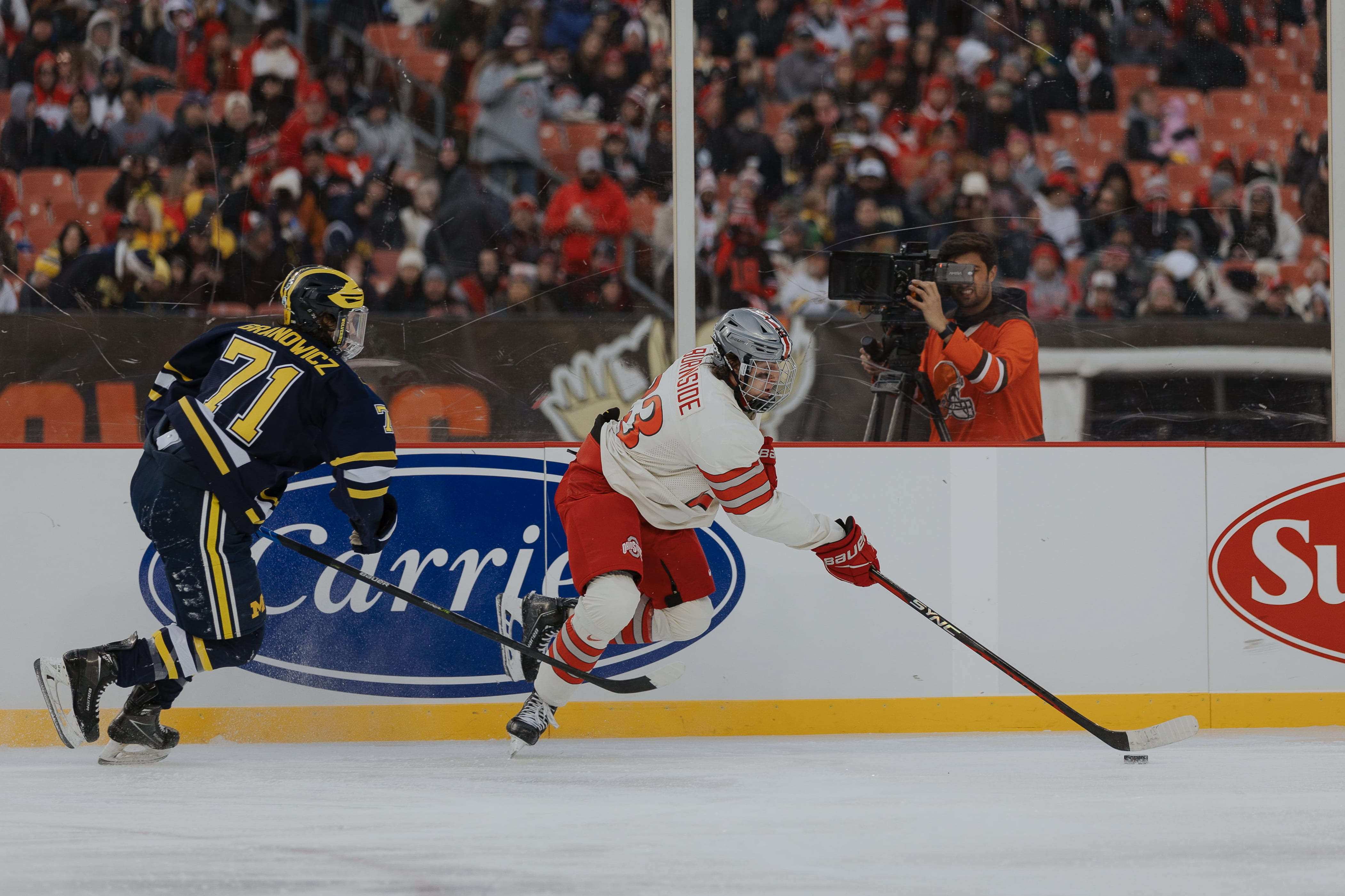
Sophomore forward Davis Burnside (23) is one of seven Ohio State players who have begun wearing neck guards in hockey games. Credit: Lantern File
Following the passing of Adam Johnson, a former center for the Pittsburgh Penguins who most recently played in the Elite Ice Hockey League, the hockey community was sent into disarray.
Johnson was playing for the Nottingham Panthers in England Oct. 28 when he was struck in the neck by the skate blade of another player, leading to his death. Johnson was, like many others, not wearing a neck guard. Could this incident have been prevented had he worn the extra protection?
A neck guard serves as extra padding that covers players’ skin and vital arteries. Some players continue to play without the neck guard because it is uncomfortable and many players are unaccustomed to it.
The debate on further neck protection continues in the hockey world. In 2022, Benjamin Balkind, also known as “Teddy,” faced a similar fate in a preparatory match in Connecticut, sparking the controversy surrounding neck guards once again.
For the NHL, NCAA and many professional and collegiate leagues across the country, neck guards are encouraged, but not required, according to USA Hockey.
This is where change is needed. Change occurs in a domino effect, and for younger kids that starts with following their role models. The hockey world will become a safer and better-protected space once there is change in the NCAA and NHL.
“One hundred percent, the players should have the opportunity; they should make that decision. If they want one, it should be 100 percent available,” Ohio State head coach Steve Rohlik said.
Currently, seven players on the Ohio State men’s team have buckled down on their safety and have been seen wearing neck guards, including sophomore forward Davis Burnside.
“It’s a contact sport so there’s always a risk of something happening,” Burnside said. “But I know with all the instances that have been going on, a couple of us have been trying to wear some neck guards.”
The International Ice Hockey Federation announced Monday that neck guards will be mandatory at all levels, including the Winter Olympics and World Championships, according to the Associated Press. Ohio State could become one of the first mandated NCAA hockey teams to enforce neck protection following the 2024-25 season.


